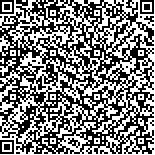| 摘要: |
| 采用对中国明对虾(Fenneropenaeus chinensis)人工注射灭活鳗弧茵,利用溶壁微球菌(Micrococcus luteus)和鳗弧茵(Vibrio anguillarum)作为测试菌株,对在抑茵活性检测中最为常用的抑茵圈法、辐射扩散法和液体培养基微量稀释检测法进行了技术改进并比较了它们的检测效果,并检测了阳离子交换柱层析法初步分离的中国明对虾血淋巴主要组分的抗茵活性,进行了细菌攻毒前后中国明对虾血浆及血细胞抗茵活性变化的研究。结果表明,液体培养基微量稀释检测法抑茵效果在三种方法串灵敏度最高,抑茵圈法灵敏度最低,但对于蛋白含量较高的样品,辐射扩散法被证明在抑茵活性检测方面更为适用。利用改进的辐射扩散法对灭活鳗弧茵攻毒前后的中国明对虾血细胞和血浆的抑茵活性进行了检测,结果显示,虽然感染后血细胞数目显著降低(P<0.05),但其抑茵能力却明显增强(P<0.05),相对而言,血浆抑茵活性变化不显著(P>0.05),说明血细胞在受到免疫刺激后抗茵因子的表达进一步加强。 |
| 关键词: 中国明对虾,抑茵检测方法,抑茵活力 |
| DOI: |
| 分类号: |
| 基金项目:国家自然科学基金资助项目,36071605号;集美大学中青年创新团队专项基金,2006A001号 |
附件 |
|
| CHANGES IN ANTIMICROBIAL ACTIVITY OF PLASMA AND HAEMOCYTES IN FENNEROPENAEUS CHINENSIS CHALLENGED BY KILLED VIBRIO ANGUILLARUM |
|
YAO Cui-Luan1, WU Chang-gong2, XIANG Jian-Hai2
|
|
1.Fisheries College,Jimei Universit;2.Institute ofOceanology,Chinese Academy ofScience
|
| Abstract: |
| Infection by pathogen represents one of the major threats to culture shrimp.The mechanism of immune defense was widely investigated because of the serious disease in the past ten years.Many antibacterial proteins and peptides were identified and cloned in shrimps.However,the changes of antibacterial activity in blood of Chinese shrimp after infected by bacteria are not known.
In this study the antibacterial methods inhibition zone assay.radial diffusion assay and microtiter broth dilution method were improved and compared in detecting the antibacterial activity in the hemolymph of Chinese shrimp Fenneropenaeus chinensis after Vibrio anguillarum challenge.The most stable and sensitive method was used to detect the antibacterial ability of the plasma and haemocyte lysis solution(HLS)in the shrimp.
Micrococcus luteus(G+)and Vibrio anguillarum(G-)were used as testing bacteria.The antibacterial activity of every fraction of hemolymp,which were separated by cation column chromatography was also tested by these antibacterial methods.
The results demonstrated that the most sensitive antibacterial method was microtiter broth dilution assay.The antibacterial activity of the plasma in Chinese shrimp could be detected when the sample was diluted 100 times.Cultivation time is important in this method.The antibacterial activity could be detected at the 1/1 0 concentration of shrimp plasma using radical diffusion assay.Inhibition zone assay was demonstrated to be the most insensitive antibacterial assay.The antibacterial activity could be tested only in the sample without any dilution using inhibition zone assay method.Radial diffusion assay was proved to be an effective antibacterial assay method when shrimp plasma was not diluted or when the sample with high protein concentration.
The results also showed that the total haemocyte counts(THC)of F.chinensis significantly decreased after challenged with anguillarum.The lowest THC value was decreased by 73%relative to control group,which appeared at 45 min(P<0.05)after dead anguilarum injection.then increased and recovered to pre—injection level at 48h after the injection.Using improved antibacterial method,the antibacterial activities of HLS and plasma of Chinese shrimp.F.chinensis were tested before and after injection with dead anguillarum.The antibacterial activity of HLS increased significantly after bacteria challenge, higher activity appeared from 3 to 12h(P<0.05)after dead anguillarum injection.then decreased and recovered to that of the control level at 24h after injection.However,there was no obvious change in antibacterial activity in plasma(P>0.05)after dead vibrio chalenge.The results suggested that the expression of antibacterial factors in haemocytes were greatly increased after immuno-stimulation.
Four spikes were identified on the fast flow column chromatography for CM-Sepharose,and the antibacterial fractions were eluted from No.24—32 when each fraction was tested by microtiter broth dilution method. |
| Key words: Fenneropenaeus chinensis,Antibacterial methods,Antimicrobial activity |
